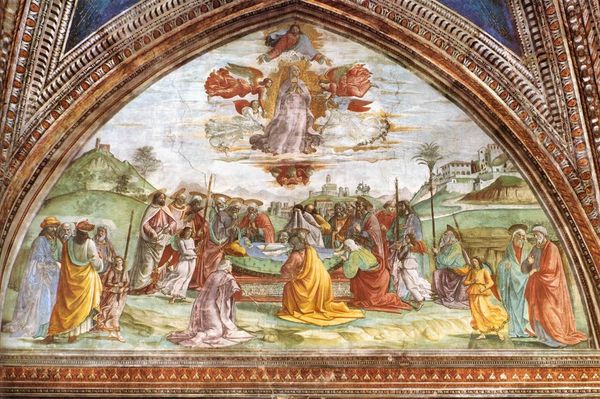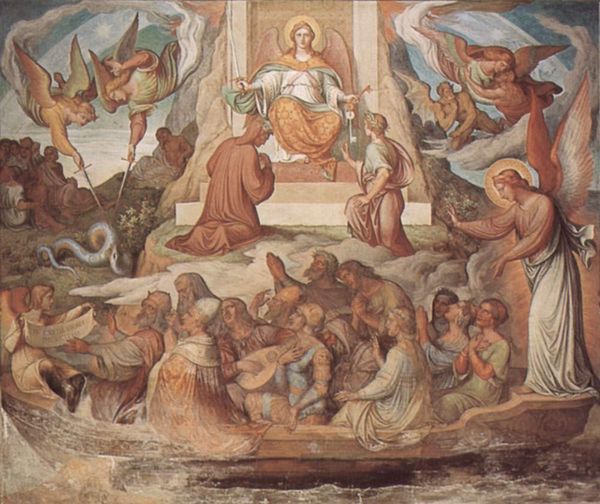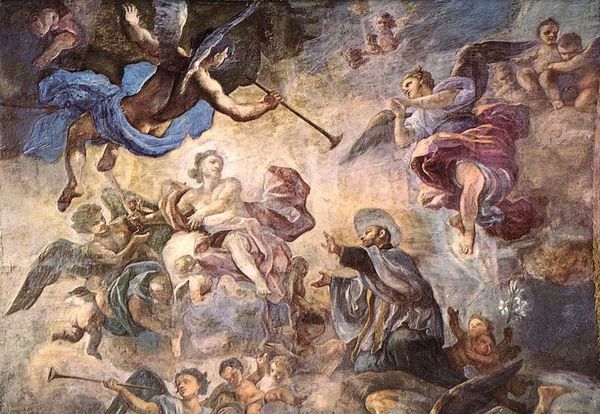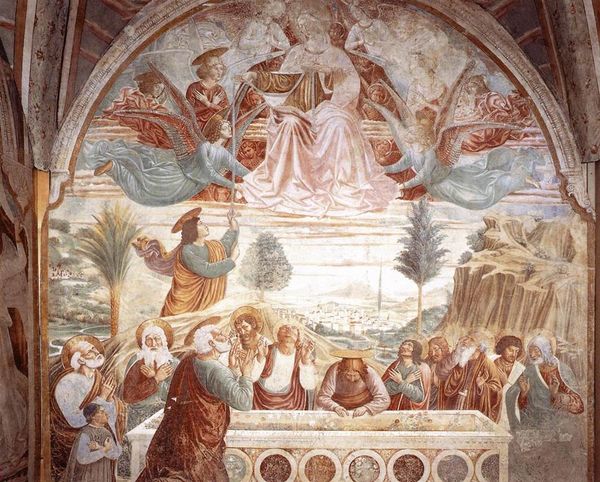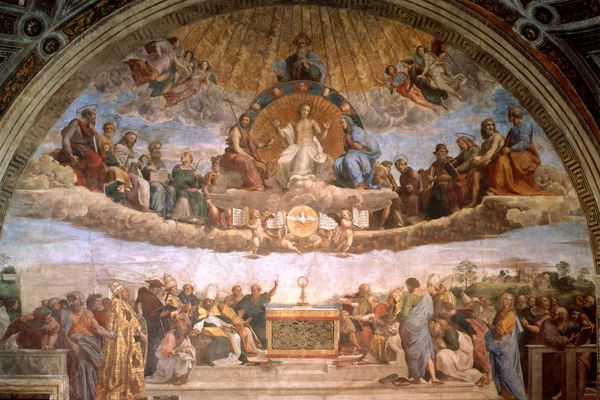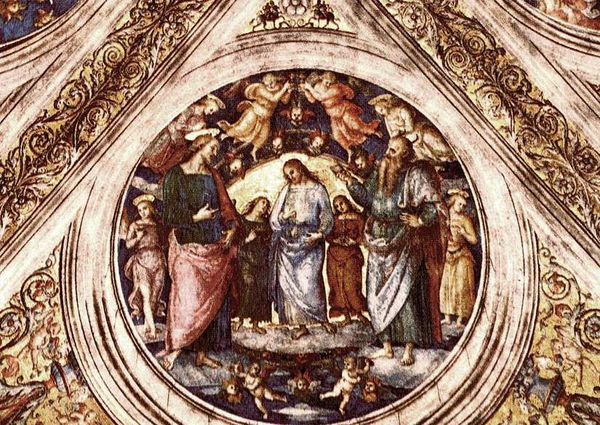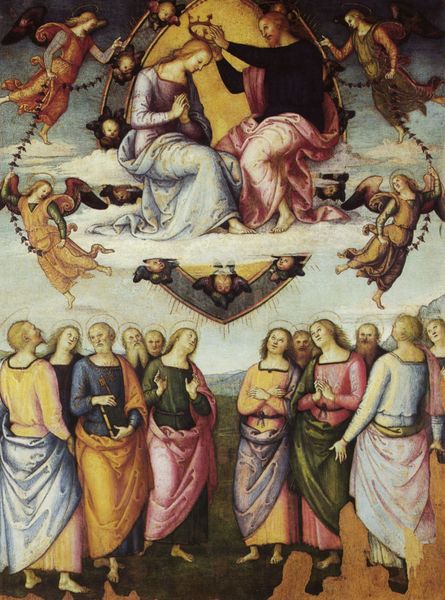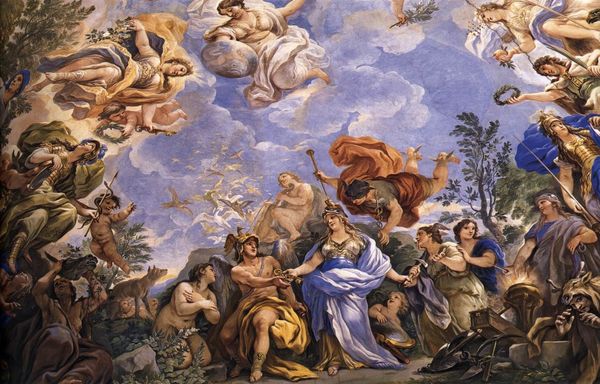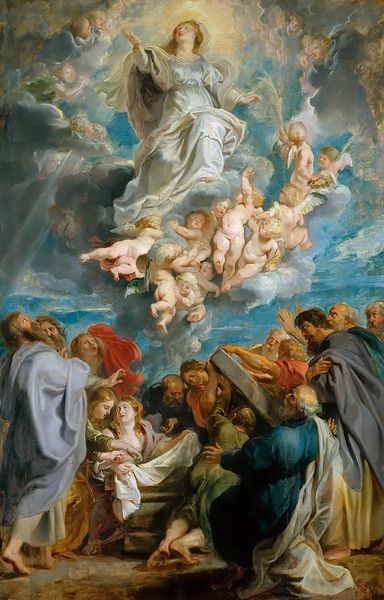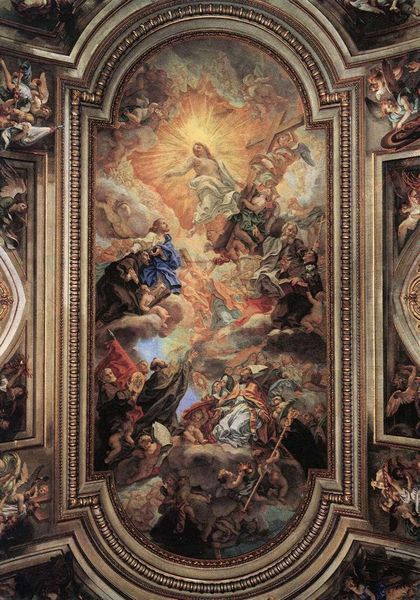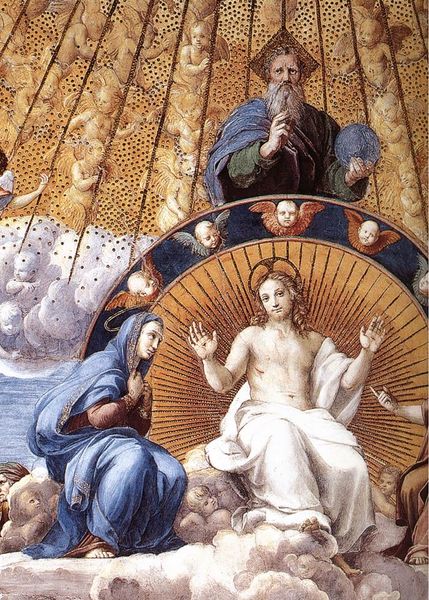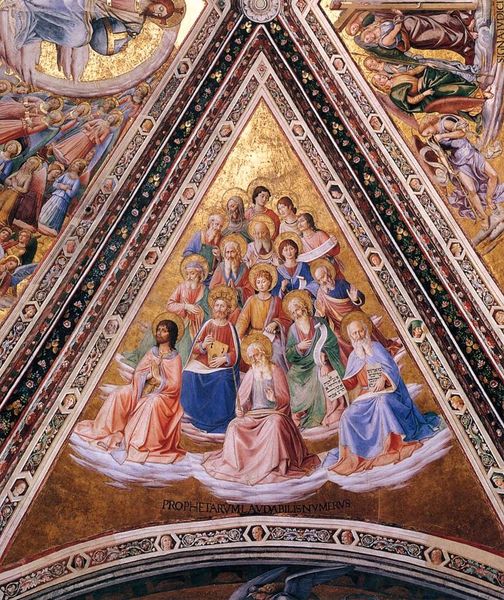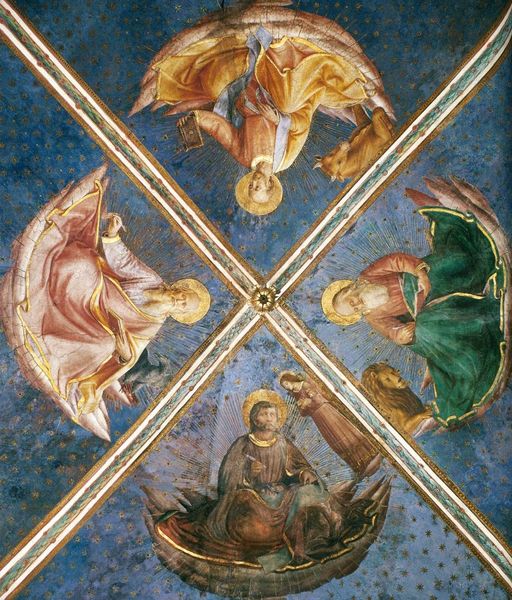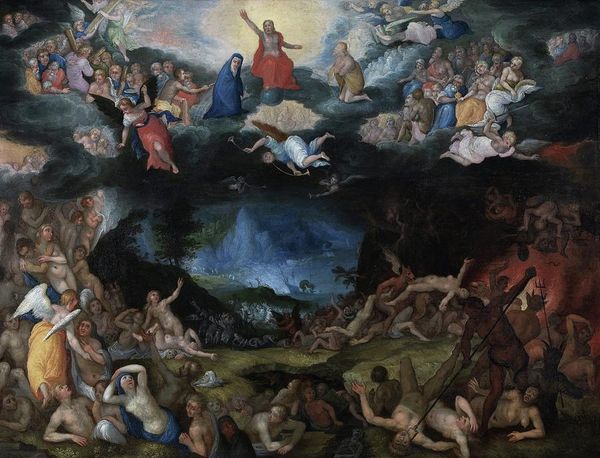
Coronation of the Virgin 1469
0:00
0:00
filippolippi
Duomo di Spoleto (Cattedrale di Santa Maria Assunta), Spoleto, Italy
Copyright: Public domain
Curator: What strikes me first about Filippo Lippi’s “Coronation of the Virgin,” painted in 1469, is its sweeping celestial scene. There’s an almost overwhelming sense of gathering and communal event, which really overwhelms the coronation in the center. Editor: My eye immediately goes to the material depiction, especially the Virgin’s ornate clothing. The implied weight and texture of her dress fabric speaks volumes about the economic power structures at play, influencing even divine portrayals. It is fascinating that the coronation itself, that central act, almost dissolves within a larger assembly of bodies. Curator: Indeed. And looking at this image through the lens of symbolism, the rainbow behind Christ and the Virgin serves as a potent signifier of God’s covenant and mercy, recalling the biblical story of Noah. The whole piece becomes about a wider visual contract, about humanity entering into agreement with divinity. Editor: Agreed. The layers of the painting also show Lippi's masterful handling of fresco technique. Notice how he created depth through subtle variations in tone and texture; I also see an economy of means, really. He's using readily available pigments, I see ultramarine reserved primarily for the most important figures, pointing to the high cost, literally and socially, of that one material. Curator: What intrigues me about the assembly of onlookers in the composition, besides your comments, is how it democratizes the imagery, the image being, of course, about a supreme hierarchical and sacred action, but depicted in such a way that seems inclusive rather than exclusionary. There's humanity in the crowd that makes one forget the divinity. Editor: Right, this blending of the human and divine is exactly what made Renaissance art such a departure! From my perspective, Lippi is cleverly negotiating societal expectations about art materials themselves, not only in that division of space but of monetary cost and painterly labour too, drawing attention to the socioeconomic realities of art production in the Renaissance, and what that production signified. Curator: A thoughtful point on those social contracts in the age of painting. It is important to observe this from a materialist point of view and acknowledge that artists of the time negotiated expectations both through symbols and materials. Editor: And equally critical is that we allow such material and iconographic perspectives to enrich one another, as well, deepening the cultural record.
Comments
No comments
Be the first to comment and join the conversation on the ultimate creative platform.
